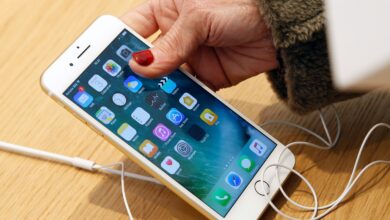
Correspondingly, how do I clean my iPhone microphone? Scrape the dirt out with a clean, dry toothbrush. When brushing the speaker or microphone, scrub the debris to the edge allowing you to then flick it out. Dried-on dirt may take quite a bit of work to loosen up and break free, but keep at it and try not to be too rough.
Amazingly, how can I clean my phone’s microphone?
- Use a toothpick. Insert the tip of the toothpick into the microphone hole.
- Use a toothbrush or paintbrush. Opt for a super-soft bristled toothbrush if you’re wary of using a toothpick.
- Use compressed air.
- Use an electronics cleaning putty.
- Other ways to improve audio quality.
Moreover, how do I fix the front microphone on my iPhone?
- Restart the iPhone.
- Check for blocked openings.
- Remove the screen protector or case.
- Unplug any accessories.
- Try a new headset.
- Restart communication apps.
- Give apps microphone access.
- Clean the microphone openings.
You asked, how do I fix the microphone quality on my iPhone?
- Disable Noise cancellation on the iPhone.
- Select Data Only in Mobile Data Options.
- Try using the phone without the case.
- Turn off the Bluetooth.
- Try restarting the phone.
- Try updating to the latest version of iOS.
Clean The Microphone If you find that one of your iPhone‘s microphones sounds muffled after you test it or it has no sound at all, let’s clean them. … Simply slide the toothbrush over the microphones to dislodge any stuck pocket lint, dirt, and dust. You can also use compressed air to clean your iPhone’s microphones.
Why does my iPhone 7 microphone not work?
Unplug or remove any accessory that’s plugged into the headset jack of your iPhone. If you are having issues with the microphone while recording a video, be sure not to block the microphone and iSight mic with your fingers while holding your device. … Check the microphone for any dirt, dust or debris clogging.
Why does my phone mic sound muffled?
Something is Blocking Your Port or Capsule This could be the case if you’re recording using a smartphone or laptop mic that has a small port. If debris blocks the port, sound waves have a harder time penetrating, and this can cause your recording to sound muffled.
How do I unblock the microphone on my iPhone?
How do I block the microphone on my phone?
- Launch the Settings app.
- Tap Apps & Notifications or Apps, depending on your device.
- Select See all apps if required. Otherwise, scroll down and tap Google.
- Choose Permissions.
- Tap Microphone.
- Select Deny to prevent Google from using the mic.
Where is microphone on iPhone settings?
You enable microphone access in the iPhone Settings app. On your phone, go to Settings, then Privacy, and choose Microphone. Find the app you want to grant access and toggle the switch to the right. The switch turns green when the mic is enabled for an app.
Why does my iPhone mic not work?
If the microphone doesn’t work in a specific app Go to Settings > Privacy > Microphone. Make sure that the app is enabled. If the app has permission to access your microphone, or if it isn’t listed, contact the app developer.
How do I fix the microphone on my phone?
- Check Microphone.
- Restart Your Phone.
- Check If Phone Protection Covering Mic.
- Check for Connected Devices.
- Clean Microphone.
- Remove Third-party Apps.
- Update Software.
How do I turn my microphone on my iPhone?
Press the “+” button on the headset remote to make the iPhone microphone louder.
How do I make my iPhone microphone less sensitive?
Just go to Settings>General>Accessibility>Phone Noise Cancellation, and make sure it’s turned ON. There are also other settings over there that you can adjust to how you like. Good luck! I doubt even a headset would help, not if the baby is in front of you and near your own mouth and close to the microphone.
Why does my audio sound muffled?
For wired headphones, muffled audio can be caused by a loose connection to the audio source. If the plug of your headphones isn’t properly plugged in the audio port, sound quality will be inconsistent. For Bluetooth headphones, it can be caused by mismatched codecs.

